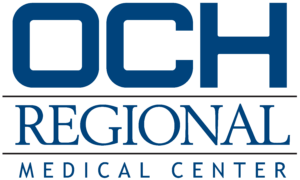 After the release on Tuesday of OCH Regional Medical Center’s interim financial report for fiscal year 2017, the question was asked by an Oktibbeha County citizen, “Will my taxes increase to cover the hospital’s loss?” The answer is no. OCH has never asked the Oktibbeha County Board of Supervisors to cover any hospital operational losses and will not in this situation either. The funds for the hospital’s day-to-day operational expenses comes from orders of physicians and providers for providing medical/surgical care such as nursing, intensive care, inpatient/outpatient surgery, labor and delivery, nursery, IV infusion, laboratory, blood bank, imaging (radiology, CT, MRI, nuclear medicine and ultrasound), respiratory therapy, physical therapy, speech pathology, occupational therapy, anesthesiology, emergency medicine, cardiac rehabilitation and ambulance services for our patients.
After the release on Tuesday of OCH Regional Medical Center’s interim financial report for fiscal year 2017, the question was asked by an Oktibbeha County citizen, “Will my taxes increase to cover the hospital’s loss?” The answer is no. OCH has never asked the Oktibbeha County Board of Supervisors to cover any hospital operational losses and will not in this situation either. The funds for the hospital’s day-to-day operational expenses comes from orders of physicians and providers for providing medical/surgical care such as nursing, intensive care, inpatient/outpatient surgery, labor and delivery, nursery, IV infusion, laboratory, blood bank, imaging (radiology, CT, MRI, nuclear medicine and ultrasound), respiratory therapy, physical therapy, speech pathology, occupational therapy, anesthesiology, emergency medicine, cardiac rehabilitation and ambulance services for our patients.
The loss reported in the interim financial report includes $4.4 million of depreciation and amortization which are non-cash expenditures. This means that the hospital used $606,587 of its current cash & investment assets which was over $21 million at July 31, 2017.
The hospital’s local investments are collateralized as required by state law. Financial institutions holding deposits of public funds must pledge securities as collateral. As of our latest audit on September 30, 2016, all hospital funds eligible to be included in the state’s collateral pool program were properly included and were fully collateralized. OCH’s fund placed with the MHA Investment Pool are not required to be collateralized; however, these funds are placed with permitted investment through section 27-105-365 Mississippi Code Annotated (1972).
What OCH is experiencing is not unique. Hospitals throughout the state are experiencing the same results that we are with increased gross revenues, increased deductions from revenues and reduced reimbursement from insurance companies and other third party payers that impacts the hospitals’ bottom line. As the OCH Board of Trustees, medical staff, administration and employees work together as a team, we will be able to endure what is impacting the hospital industry nationally and statewide.
